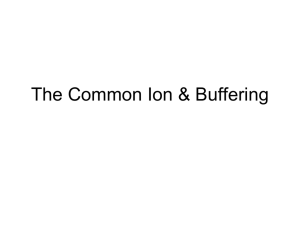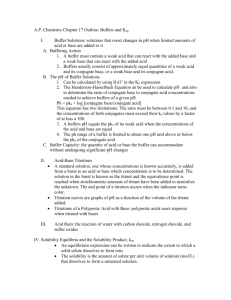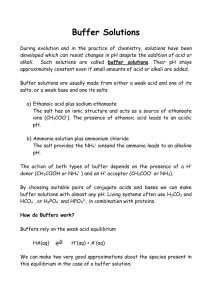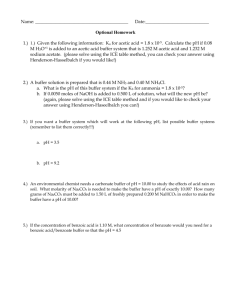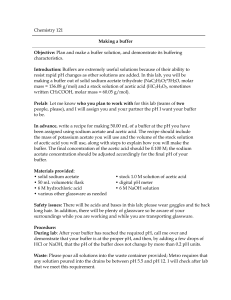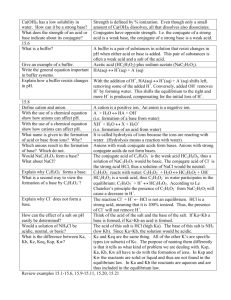File - Malatches Science
advertisement
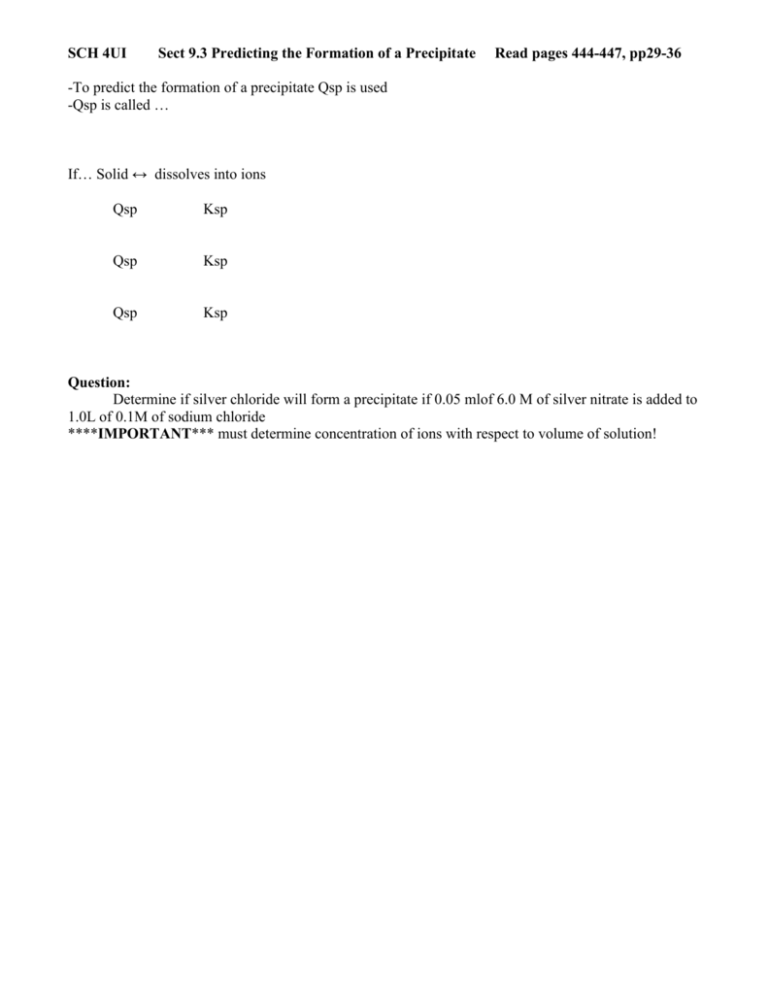
SCH 4UI Sect 9.3 Predicting the Formation of a Precipitate Read pages 444-447, pp29-36 -To predict the formation of a precipitate Qsp is used -Qsp is called … If… Solid ↔ dissolves into ions Qsp Ksp Qsp Ksp Qsp Ksp Question: Determine if silver chloride will form a precipitate if 0.05 mlof 6.0 M of silver nitrate is added to 1.0L of 0.1M of sodium chloride ****IMPORTANT*** must determine concentration of ions with respect to volume of solution! Buffer Solutions … see pages 409-410 and 440-441… Complete pp #25-28 *Buffers or Buffer solutions are composed of either a -Buffer solutions resist changes in pH when a moderate amount of an acid/base is added Example 1 Weak acid and it’s conjugate base resist against pH in the following way Example 2 Weak base and it’s conjugate acid resist against pH in the following way Note: Often the textbook refers to the fact that a buffer is made with a weak acid and it’s salt. Remember that the salt will dissociate producing the conjugate base and a cation. Hence a conjugate acid/base or salt of an acid/base means the same thing. How does Le Chatelier’s principle apply to the above reactions? -Buffer capacity is a measure of the quantity of acid or base that can be added before a noticeable change in pH occurs -Buffer capacity is dependent on the concentration of the acid/conj base or base/conj acid pair -The more concentrated a buffer solution the higher the buffer capacity and hence a smaller change in pH Buffer Question: A buffer solution was made with 100ml of 0.2M acetic acid and 100ml of 0.2M sodium acetate. If the Ka for acetic acid is 1.8 X 10-5 determine the pH of this system. Hint 1: must determine the concentration of acetic acid and it’s salt in the solution Hint 2: what is the concentration of acetic acid and salt initially



